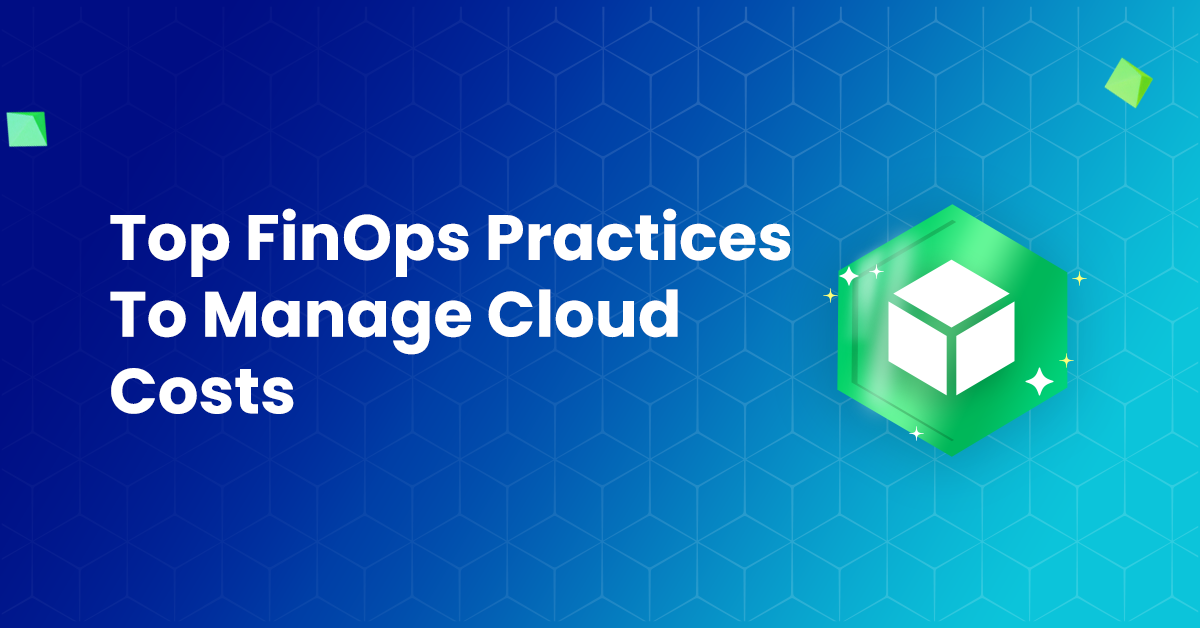The idea of cloud computing has become increasingly popular as businesses of all sizes move their data and applications to the cloud. However, with increasing cloud adoption comes the challenge of managing rising cloud costs.
Managing cloud costs can be a tricky task because of the numerous cloud providers and the complex pricing structures. It is essential for businesses to be aware of the different pricing models and to understand the best ways to contain their cloud costs. This blog will explore the top FinOps practices for effectively managing cloud costs.
What is FinOps?
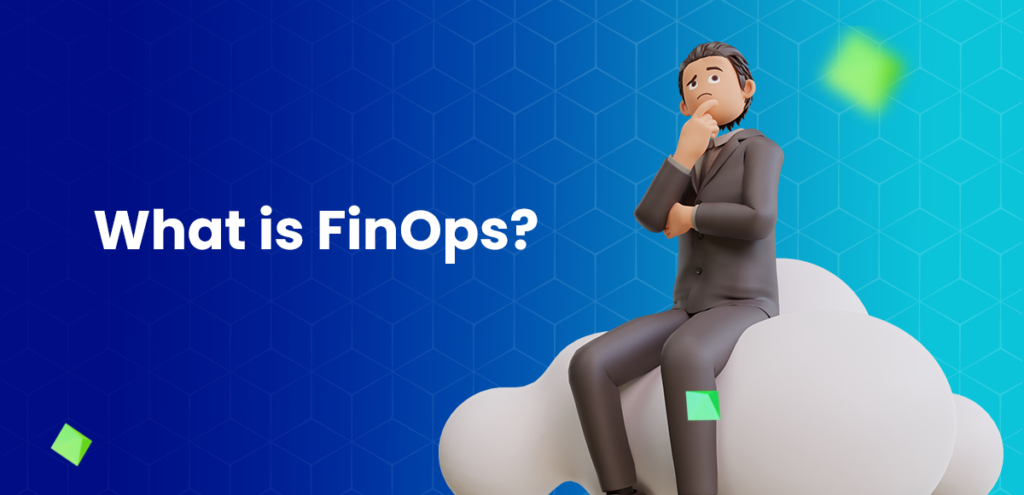
FinOps is the practice of managing the financial operations associated with cloud computing. It is a process that involves tracking, analyzing, and optimizing cloud costs. The objective of FinOps is to align cloud costs with the business objectives of the organization. By understanding these cost drivers, businesses can take action to reduce their cloud costs while still meeting their business objectives. This can involve changing their cloud architecture, optimizing resource usage, and taking advantage of discounts and other cost-saving opportunities. A better understanding of the topic can be grasped from the blog: What is Cloud FinOps?
Top FinOps Practices For Managing Cloud Costs
Cloud computing has revolutionized businesses, providing them with the agility and scalability they need to remain competitive in the digital age. However, with the advantages of cloud computing come the challenges of managing cloud costs. This is where FinOps (Financial Operations) come into play. FinOps is an emerging discipline that helps organizations manage their cloud costs and optimize their financial operations. Here are the top FinOps practices for managing cloud costs:
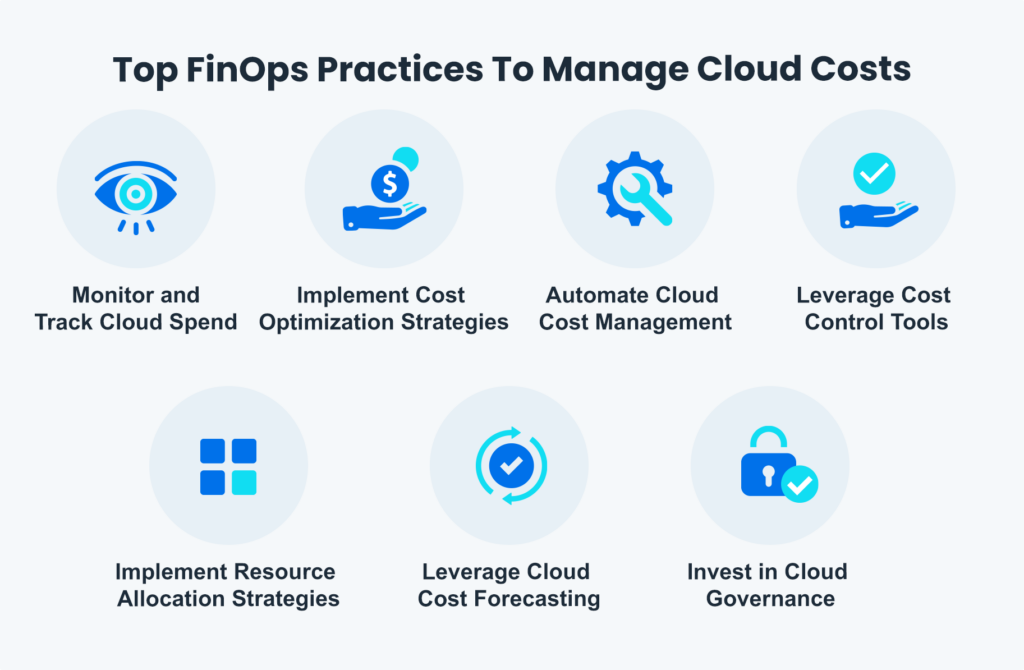
Monitor and Track Cloud Spend:
The first step to managing cloud costs is to monitor and track cloud spending. This involves understanding how different services are used, identifying cost drivers, and tracking user trends. This will help you identify areas of cost optimization, unused resources, and services that are not being used.
Implement Cost Optimization Strategies:
Once you have identified the cost drivers, you can start to implement cost optimization strategies. This includes leveraging discounts, leveraging spot instances, scaling down unused services, and eliminating unused services. Here are some tips to help you get started:
- Analyze Your Company’s Costs
- Identify Areas of Waste and Inefficiency
- Streamline Processes
Automate Cloud Cost Management:
Automation is key to managing cloud costs. Automation can help you quickly identify cost savings opportunities, automate resource provisioning, and automate billing. Automation can help companies to identify and eliminate cloud cost inefficiencies. For example, automation can help a company track the utilization of cloud resources and identify unused or underutilized resources for recycling or termination. Automation can also help companies to identify any opportunities for cost optimization, such as discounts or promotions from cloud providers or potential cost-saving strategies like scaling up or down resources.
Leverage Cost Control Tools:
Several cost control tools can help you manage cloud costs. These cost optimization tools can help you monitor and track usage trends, set budget limits, and identify cost optimization opportunities. These cost control tools are designed to provide businesses with the ability to identify and analyze their costs. These tools can be used to track expenses, identify areas of inefficiency, and implement cost-saving measures.
Implement Resource Allocation Strategies:
Resource allocation is important in managing cloud costs. You should aim to allocate resources in the most efficient way possible based on usage patterns and cost optimization strategies.
Leverage Cloud Cost Forecasting:
Cloud cost forecasting can help you understand future cloud costs and identify areas where you can save money. This can help you plan ahead and budget more accurately.
Invest in Cloud Governance:
Cloud governance is important in managing cloud costs. This involves setting rules and policies for cloud usage, defining roles and responsibilities, and monitoring compliance.
Cloud costs can be a significant hurdle for businesses of all sizes. The best practices for effectively managing cloud costs include understanding the different pricing models, optimizing resource usage, taking advantage of discounts and other cost-saving opportunities, monitoring costs regularly, and reevaluating your cloud architecture. Businesses can reduce cloud costs and get the most out of their cloud investments by taking these steps.
How Can nOps Help With FinOps?
nOps provides businesses with a comprehensive FinOps platform that makes it easy to track, analyze, and optimize cloud financial operations. The platform offers a suite of analytics tools that make monitoring and analyzing cloud costs easy. It also provides detailed cost breakdowns and insights into usage patterns, enabling businesses to identify cost optimization areas and track progress over time. Additionally, nOps provides automated alerts and recommendations to help businesses stay on top of their cloud FinOps KPIs.
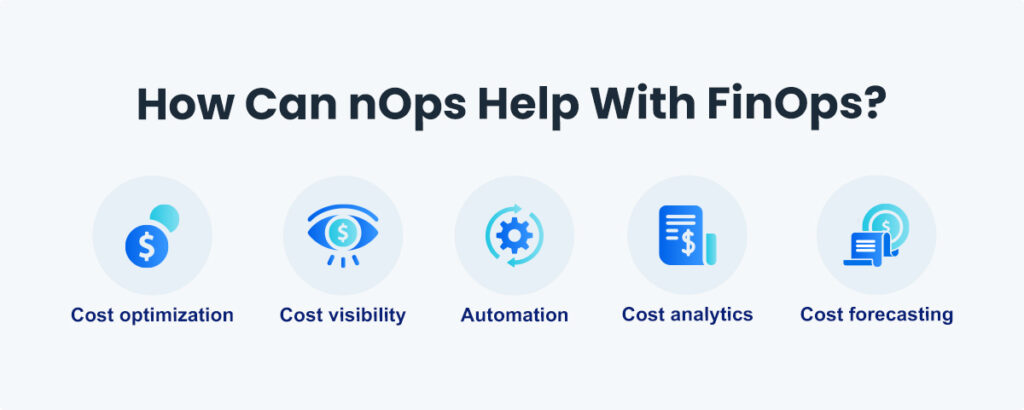
- Cost optimization: nOps help identify and eliminate unnecessary costs via ShareSave Scheduler. This includes analyzing usage patterns, identifying inefficient configurations, and leveraging cost savings opportunities.
- Cost visibility: nOps helps organizations with detailed insights into their cloud infrastructure costs, helping them understand where their money is being spent and where improvements can be made. This helps organizations make smarter decisions about their cloud infrastructure, leading to more efficient and cost-effective solutions.
- Automation: nOps offers the ability to automate many of their cloud management tasks, such as resource provisioning, cost optimization, and cost visibility. This helps organizations reduce their manual workload, freeing resources to focus on more value-added activities.
- Cost analytics: nOps Cost Optimization provides organizations with detailed insights into their cloud infrastructure costs, helping them understand how cloud usage impacts their overall costs. This helps organizations make better decisions about their cloud infrastructure, leading to more efficient and cost-effective solutions.
- Cost forecasting: nOps helps organizations plan for future cloud costs and expenses, enabling them to make informed decisions about their cloud infrastructure. This helps organizations avoid unexpected costs and ensure that they can take advantage of cost savings opportunities.
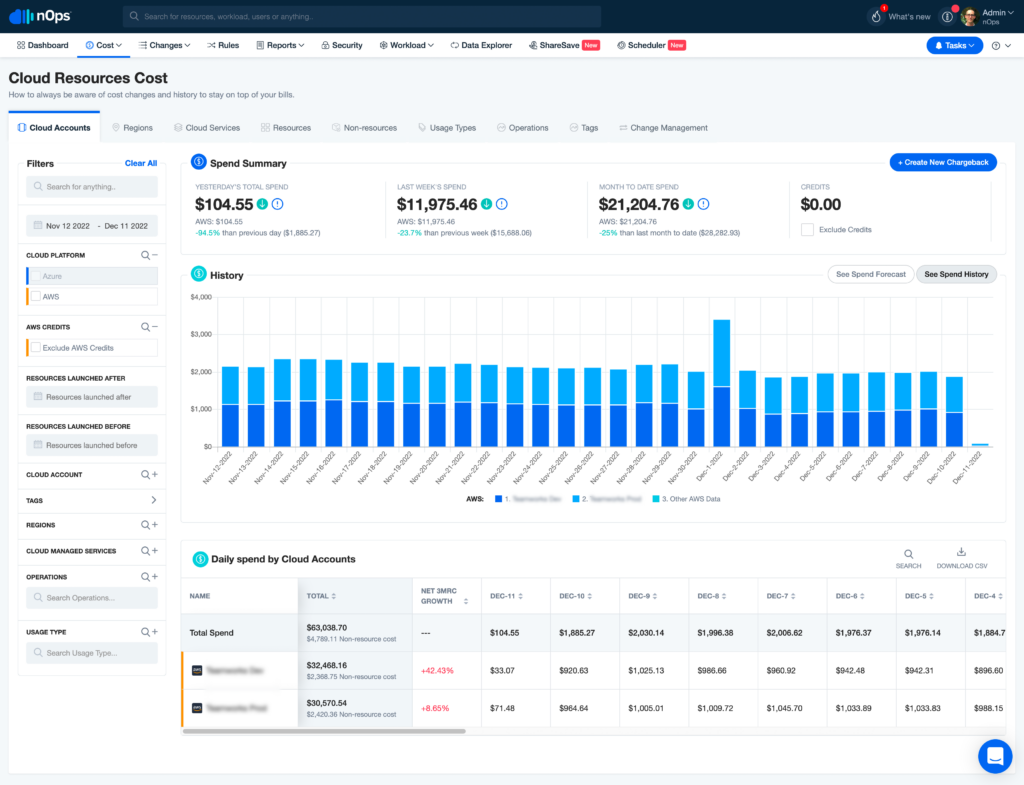
At nOps, we help you deliver FinOps in two ways. First, we provide a wide range of cost optimization capabilities to help you keep cloud spending to a minimum. In addition, we provide the ShareSave feature that enables your team to optimize cloud costs continuously with smart Reserved Instance planning. Sign up for nOps today to see it in action.

